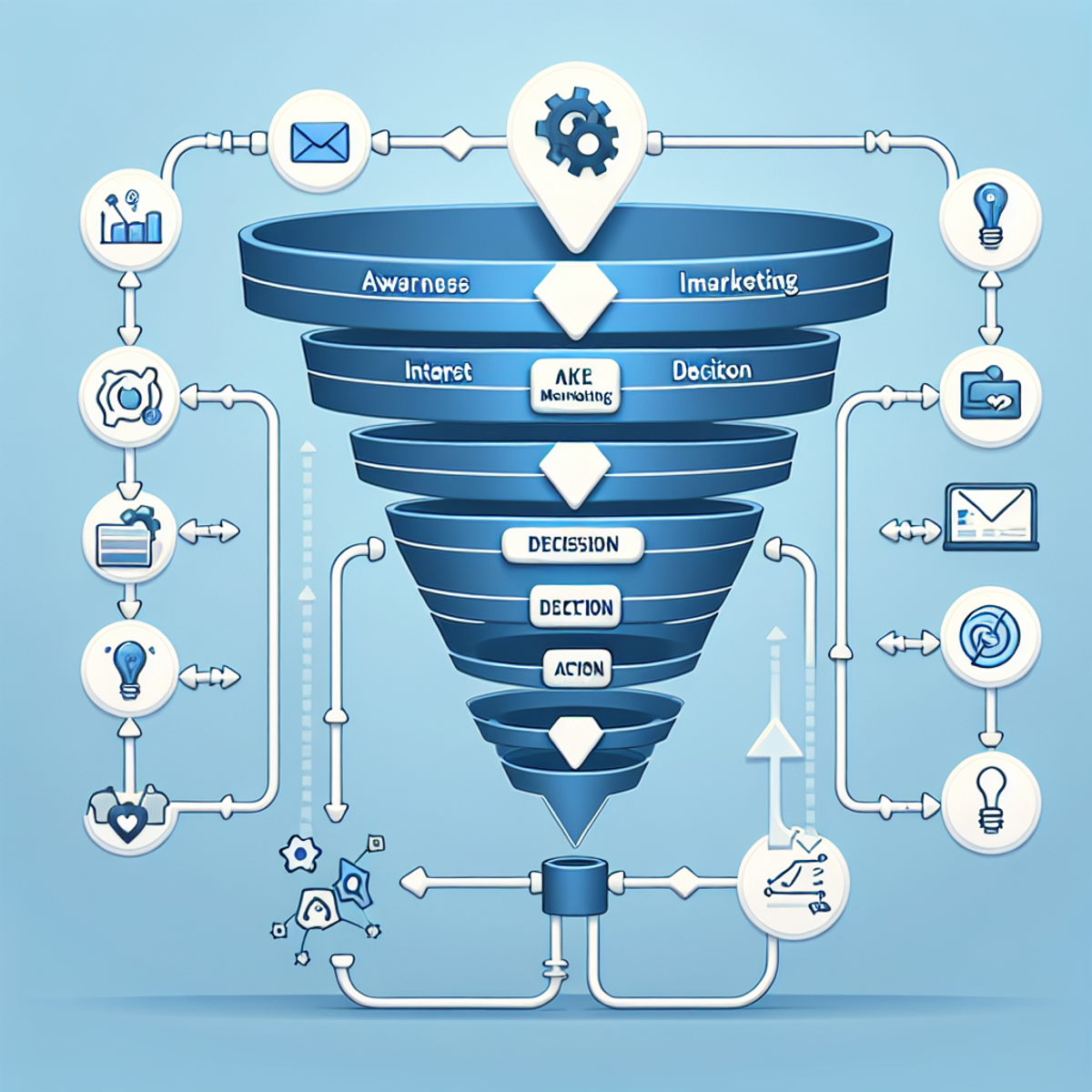Page Contents
Optimizing Sales Funnel Strategies is the cornerstone of excellence in the dynamic realm of sales and marketing. At the heart of customer acquisition and revenue generation lies a well-structured sales funnel, acting as a strategic roadmap that steers potential customers through a meticulously designed journey, starting from initial awareness and culminating in a successful purchase.
Delving into the intricate world of sales funnel optimization is essential for businesses aspiring to achieve peak performance. This blog post aims to unravel the nuanced aspects and essential strategies that contribute to not just any sales funnel, but a highly effective and result-oriented one.
In the following sections, we will dissect the anatomy of a sales funnel, scrutinizing each stage with a discerning eye to uncover the specific elements that transform it from a mere structure into a powerhouse of conversion and customer engagement. By navigating through the intricacies of Optimizing Sales Funnel Strategies, businesses can unlock the potential for sustained growth and profitability in an ever-evolving market landscape.
Lead Generation:
The first stage of a sales funnel is lead generation. This involves attracting and capturing the attention of potential customers who have shown some interest in your product or service. Effective lead generation strategies include content marketing, search engine optimization (SEO), social media marketing, paid advertising, and referral programs. But by implementing these strategies, you can drive traffic to your website, increase brand awareness, and generate leads.
Lead Nurturing:
Once you have captured leads, the next step is to nurture them and build a relationship. So lead nurturing involves providing valuable content, addressing their pain points, and establishing trust. Automated email marketing campaigns, personalized content, webinars, and targeted messaging are powerful tools for nurturing leads. The goal is to educate and engage them, keeping your brand top-of-mind and moving them closer to the next stage of the funnel.
Conversion Optimization:
At the conversion stage, your leads are considering making a purchase. To optimize conversions, it is essential to create a seamless and persuasive buying experience. This includes optimizing landing pages, simplifying the checkout process, offering compelling product descriptions, and providing social proof such as testimonials and reviews. Additionally, implementing remarketing campaigns and offering discounts or incentives can help push hesitant leads towards making a buying decision.
Customer Retention:
Many businesses overlook the importance of customer retention, but it is a critical component of a successful sales funnel. Retaining existing customers is more cost-effective than acquiring new ones and can lead to increased customer lifetime value (CLV). Strategies for customer retention include personalized communication, excellent customer service, loyalty programs, and ongoing customer engagement through email marketing or social media. By prioritizing customer satisfaction, you can foster loyalty, drive repeat purchases, and generate positive word-of-mouth referrals.
Analytics and Continuous Improvement:
To ensure the effectiveness of your sales funnel,
it is vital to track and analyze key performance metrics at each stage.So use tools like Google Analytics, CRM software, and A/B testing to measure conversion rates, click-through rates, customer engagement,
and overall funnel performance. But by identifying bottlenecks or areas for improvement, you can refine your strategies, optimize conversions, and maximize your sales funnel’s efficiency.
Conclusion:
In conclusion, the backbone of a thriving business lies in a meticulously crafted and optimized sales funnel, where each stage plays a crucial role in steering potential customers towards becoming loyal advocates. The journey commences with lead generation, the initial step in attracting individuals who might be interested in your products or services. As you cast a wide net to bring in potential customers, it’s essential to employ diverse strategies, from content marketing to social media engagement, ensuring a steady influx of leads into the funnel.
However, the mere accumulation of leads is not enough; it’s the subsequent stage, lead nurturing, that transforms these prospects into informed and engaged individuals. This involves personalized communication, targeted content, and a strategic approach to understanding and addressing their needs. By building relationships through effective lead nurturing, businesses can cultivate trust and position themselves as valuable solutions to the customers’ problems.

The conversion optimization phase is the pivotal point where leads transition into paying customers. This step demands a deep understanding of consumer behavior, analytics, and a commitment to refining and streamlining the entire conversion process. Implementing data-driven strategies and employing A/B testing can significantly enhance the efficiency of this stage, increasing the likelihood of turning leads into satisfied customers.
Yet, the journey doesn’t conclude with a successful sale;
rather, it evolves into customer retention strategies. The post-purchase relationship is just as crucial as the initial engagement, requiring businesses to prioritize customer satisfaction, provide ongoing value, and actively seek feedback. By transforming satisfied customers into brand advocates, you create a powerful marketing force that can organically attract new leads and contribute to sustainable growth.
The key phrase “Optimizing Sales Funnel Strategies” encapsulates the ongoing process of refining and adapting the sales funnel to the ever-changing landscape of market dynamics and customer preferences. Continuously analyzing performance metrics, identifying pain points, and implementing improvements are integral to ensuring the sales funnel remains effective and aligned with evolving business goals.
In essence, a well-crafted and effectively optimized sales funnel serves as a dynamic mechanism, propelling your business towards sustainable growth and profitability. By understanding and integrating the various components of lead generation, lead nurturing, conversion optimization, and customer retention, businesses can not only attract and engage potential customers but also foster long-term relationships that contribute to enduring success in a competitive marketplace.
email marketing internet marketing marketing online business sales funnel
Last modified: 16 February 2024










Hey there! Came across your post on the WordPress feed and couldn’t resist saying hello. I’m already hooked and eagerly anticipating more captivating posts. Can’t seem to find the follow button, haha! Guess I’ll have to bookmark your blog instead. But rest assured, I’ll be keeping an eye out for your updates!
Hey there! Thanks a lot for coming across my post on the WordPress feed and taking the time to say hello. I’m really glad to hear that you found it captivating! So feel free to reach out anytime, and I’ll do my best to keep you engaged and provide the assistance you need. Thanks for keeping an eye out for updates, and I’m excited to continue the conversation with you!
Apparently, there’s so much I need to learn about inside the world of marketing. Maintaining a sales funnel is not something I thought could be done so strategically. Thank you for this enlightening post now I guess I can plan my sales in a better way!
You’re welcome! I’m glad the post on the anatomy of a successful sales funnel was enlightening for you. Indeed, maintaining a sales funnel requires strategic planning and understanding of the key components involved. By having a clear understanding of your customers’ journey from awareness to purchase, you can optimize your marketing efforts and improve your sales conversion rates. If you have any specific questions about sales funnels or need further guidance, feel free to ask ore check https://sakkemoto.com/sales-funnels/ for more secrets about sales funnels!
Though I’ve been a small business owner for quite some time, I’ve also been struggling to manage my sales and income. It was a question mark for me but now I understand what i’ve been doing wrong, thanks to your post! Now all I have to do is start from the beginning and manage it well.
Thank you for sharing your experience as a small business owner. I’m glad to hear that the post was able to shed light on what you might have been doing wrong in managing your sales and income. Recognizing the areas that need improvement is an important first step towards making positive changes.
Managing sales and income effectively is crucial for the success and growth of a business. It involves various factors such as accurate financial tracking, setting realistic sales targets, effective marketing strategies, and optimizing revenue streams.
Starting from the beginning and implementing proper management practices can make a significant difference in your business’s financial performance. Consider creating a detailed financial plan, analyzing your sales data, identifying areas for improvement, and implementing strategies to increase revenue and control expenses.
Remember, managing sales and income is an ongoing process, so it’s important to continuously monitor and adjust your strategies as needed.
If you have any specific questions or need further guidance on managing your sales and income, feel free to ask. I’m here to support you on your journey towards better financial management for your small business.